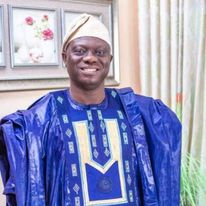Summons Pantami, AGF, AG, CEOs of telecommunication companies
Juliet Akoje in Abuja
The House of Representatives has queried the Nigerian Communication Commission (NCC) over 1014 projects under the Universal Service Provision Fund (USPF), including an e-Library project that was carried out to the tune of over N2 billion.
The House frowned at a request by the Commission for N700 billion to ensure that 27 million Nigerian who do not currently have access to telecommunication get coverage.
This was as the Executive Vice Chairman of the NCC, Prof. Umar Garba Danbatta, along with other officials appeared before the House Ad-hoc Committee investigating the failure and inability of the Commission to promote widespread availability mobile telecommunication network service throughout Nigeria as well as accruals and utilisation of funds in the USFP.
The Committee chaired by Hon Bamidele Salam, pointed out that there was no specific description of what was done in the contracts and they were captured in a manner that they would be hard to track, alleging that 80 per cent of the projects had no specific location.
The Committee requested that the NCC should provide the specific addresses and project description and specifications for each of the contracts that were awarded and listed in the 91-page document it submitted, by 2pm today.
It noted that most of the contractors also had no addresses specified on the document.
The lawmakers also queried the Commission for unilaterally deciding how much money goes to the USPF, saying that, “There is a list of contracts awarded by the USPF since inception provided for us here, which is about 1014 various contracts on which a few observations have been made.
“There is also the submission of the annual audited report of the USPF which has been from 2007 till date, but a few years missing from the audited reports.
“A few observations have been raised out of that and I want members to let us address those issues so they can take the answers holistically.”
The Committee has also summoned the Minister of Telecommunications and Digital Economy, Isa Pantami, the Accountant General of the Federation, the Auditor General as well Chief Executive Officers of telecommunication companies over the issue.
They were summoned to appear before the Committee alongside the NCC on Wednesday, May 10, 2023.
Danbatta while responding said the USPF regulations stipulates that the Commission would determine the contributions from time to time.
But the lawmakers argued that a regulation made by the NCC cannot supersede its enabling Act.
Hon. Mark Gbillah said “The challenge is that the NCC has given itself the power to annually decide what it is going to annually allocate to USPF.
“Looking at the documents presented, administrative expenses rose from N19 million to N127 million. The expenditure on staff rose exponentially. Let me say that it is important for the NCC to let us know the premise on which you annually determine allocate the USPF or otherwise and what annual allocation they have proposed and implemented from inception till date.
“We need to know what the funds have been used for. For instance, the e-library alone you spent over N2 billion. How functional is the library based on the amount that have been allocated to them when a lot more should have been allocated in my opinion to the deployment of Base Transceiver Stations to have more coverage across the country?”
Another lawmaker queried why in 2015, despite the staff strength reducing from 48 to 45, there was an almost 100 percent increase from N434 million to N824 million.
Earlier in his response, said, “In 2013, there was a consultancy driven by the NCC to identify clusters of access gaps in the country. 207 clusters of access gaps according to that study and in these clusters of access gaps there were about 37 million Nigerians.
“Since then, through the Commission’s efforts, the number of people without access had been reduced to 27 million. What we have done to bring telecom services to people living in rural, unserved and underserved areas of this country, totalling 37 million people courtesy of the consultancy that was conducted in 2013.
“By 2019, we succeeded in reducing the clusters of access gaps to a 114 through the deployment of the necessary infrastructure needed to bring services to people living in rural, unserved and underserved areas of the country.
“This deployment of infrastructure are the base transceiver stations. I am going to give information about the base transceiver stations we have so far. This resulted in the reduction of Nigerians in those clusters from 37 million to 31 million in 2019. By 2022 we had reduced the clusters of access gaps to 97 from 207 in 2013.”
The Punch
Monday, 8th May, 2023






Leave A Comment